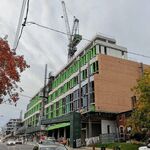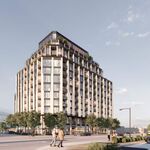Epi
Active Member
The problem is... even ignoring all the tangental advantages of LRT over the bus, LRT provides something the bus does not... greatly expanded capacity. More capacity = more ridership growth opportunity = better for transit usage.
It's not great policy to go from bus->subway all in one swoop, even if that was forced for Sheppard. Both the Yonge line and the Bloor line were successful LRT lines before they were subways.
If we waited for ridership to truly justify having a subway, we'd be waiting until the bus was absolutely, completely saturated and unridable. Furthermore, considering the fact that the TTC has so much trouble hiring more bus drivers, it seems like we'll be forever starved for more buses, while a LRT has 3-4x the capcity for 1 driver.
LRT is a very good inbetween measure which has much more capacity than a bus ever will in places where we simply cannot justify building a subway, nor would having stations every 1-2km in the suburbs (as we seem to build our suburban subways in Toronto) be a good replacement for the current routes.
It's not great policy to go from bus->subway all in one swoop, even if that was forced for Sheppard. Both the Yonge line and the Bloor line were successful LRT lines before they were subways.
If we waited for ridership to truly justify having a subway, we'd be waiting until the bus was absolutely, completely saturated and unridable. Furthermore, considering the fact that the TTC has so much trouble hiring more bus drivers, it seems like we'll be forever starved for more buses, while a LRT has 3-4x the capcity for 1 driver.
LRT is a very good inbetween measure which has much more capacity than a bus ever will in places where we simply cannot justify building a subway, nor would having stations every 1-2km in the suburbs (as we seem to build our suburban subways in Toronto) be a good replacement for the current routes.




